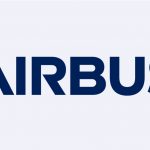IFA holds John Saull Memorial Lecture at Cranfield University
The Next Great Steps Forward for the aviation industry was the subject of the John Saull Memorial lecture at Cranfield on 20 November.
After reviewing some of the great achievements of the past including the ‘giant leap for mankind’ on the moon in 1969, what groundbreaking developments are in progress right now? Padhraic Kelleher, Chairman of the Air Navigation Commission at ICAO and the UKs Air Navigation Commissioner in Montreal, gave the lecture and talked about the emerging triumphs of modern engineers, including eVTOLs and the first Type Certificate given for an unmanned 2-passenger vehicle in China.
The lecture showed that today’s engineering achievements are just as impressive as the leaps forward of the past, and that aeronautics is entering another exciting phase. During the wide-ranging Q&A, Padhraic commented that as the industry continues to grow, attracting enough engineering talent remains a challenge. Using his ICAO experience, he also explained that one of the main bottlenecks in the current global situation is airspace management, including the range of traffic and external disruptors, such as conflict zones. The influence of public opinion is also crucial as they now expect not only safety and comfort but also choice, low noise and sustainability.
View Padhraic’s presentation here:
John Saull Lecture for IFA
The event was well attended at the impressive Cranfield DARTec building and was also screened online for remote participation. Delegates were welcomed by Cranfield’s Professor Graham Braithwaite, who runs the Cranfield Accident Investigation course and other aeronautical postgraduate programs. IFA CEO John Vincent introduced the lecture and reviewed the great contribution of John Saull, previous IFA CEO and a great promoter of Airworthiness and the voice of Aircraft Maintenance Engineers for many years. He was the only Engineer to serve as Head of Operating Standards at UK CAA, a post that covered both flight operations and engineering but – apart from John – almost exclusively occupied by pilots.
At the same event, presentations were made to Emily Wilson, a DE&D apprentice awarded the John Saull Scholarship, including a place on the System Safety Assessment course generously donated by Cranfield University and travel and accommodation expenses generously donated in cash by the Saull family, who also attended the lecture. The presentation was made by Dr. Hazel Courteney, IFA President, where Emily received a certificate and a model of the Cranfield ‘flying laboratory’ aircraft.
Then the Cranfield Chief Executive & Vice-Chancellor Karen Holford joined the event to present a picture and a vote of thanks to Professor John Bristow, who originated and developed the MSc in Airworthiness at Cranfield and taught on it for many years.
The event concluded with a tour by Dr. Simon Place to show visitors DARTeC facilities and one of the the Cranfield Flying Laboratory aircraft.
Life and work of John Saull
John Saull was born in Hale, Cheshire in 1935, and educated at Altrincham Grammar school. He took an early interest in civil aviation, working for a small aerial photography and charter company at Ringway (Manchester) airport, where he spent his leisure hours working on the aeroplanes and flying in them whenever to opportunity arose.
After leaving school, he took an Aeronautical Engineering Apprenticeship at A.V.Roe, Manchester, which he completed in 1958. During this period he worked on Vulcan bomber production including some flight testing, and space projects. He subsequently became the first technical representative on the AVRO 748 commuter aircraft and went to Argentina in 1961 on board the first aircraft for the national airline, based in Buenos Aires.
By 1963, John had been invited to join the Air Registration Board (ARB), the UK airworthiness regulator. Cranfield College of Aeronautics was John’s next venue where he obtained an Air Transport Engineering degree and took the “unmissable” opportunity to obtain his Private Pilots Licence flying Auster aircraft, one of which he has co-owned for some 30 years.
In 1966, John moved to Bristol and took the responsibility for the oversight of the construction standards of the supersonic airliner, Concorde. John found the work on Concorde fascinating, it took him to all the UK manufacturing plants and to the French assembly line in Toulouse, on regular liaison visits. He was involved with the development of the aircraft from initial build of the prototypes through to airline route proving and made several flights during this time.
His next assignment was in Trinidad, West Indies, where he took up the management of a team of UK Civil Aviation Authority (CAA) airworthiness advisors to the Directors of Civil Aviation in many of the Caribbean islands, effectively from Guyana to Belize, which followed UK regulation standards.
John held several senior positions with the CAA, finally retiring as head of operating standards in late November 1995, after 32 years as a safety regulator.
He served as a member of the Council of the Royal Aeronautical Society and was a Liveryman of the Guild of Air Pilots and Air Navigators. He continued his flying and aviation technical safety work as Executive Director of The International Federation of Airworthiness for 20 years. John also co-authored two published technical books on the safety record of technological industries.




